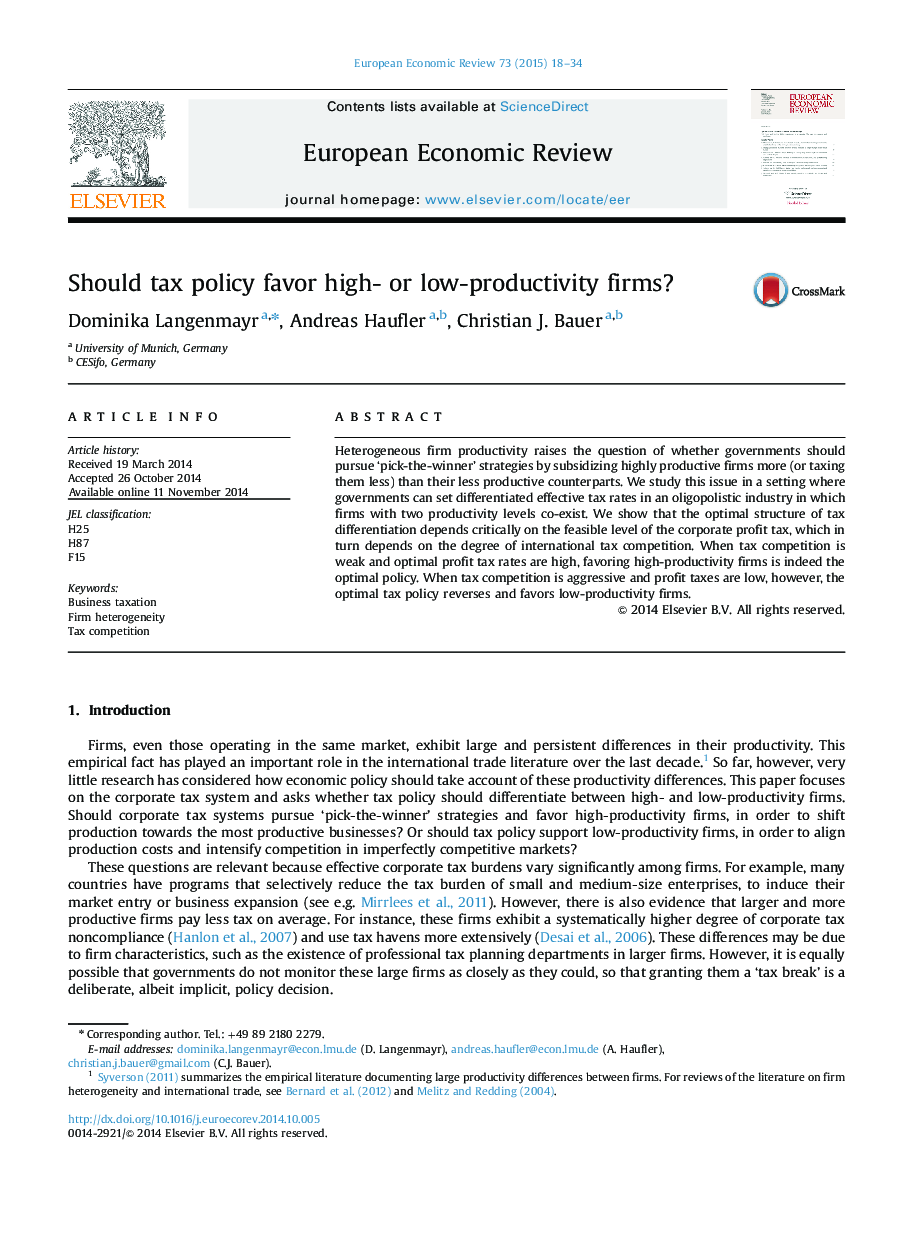| کد مقاله | کد نشریه | سال انتشار | مقاله انگلیسی | نسخه تمام متن |
|---|---|---|---|---|
| 5066638 | 1476795 | 2015 | 17 صفحه PDF | دانلود رایگان |
- We study how governments differentiate effective capital taxes by firm productivity.
- The optimal tax pattern depends on the degree of international tax competition.
- With moderate tax competition, low-cost firms are tax-favored.
- The optimal tax policy is reversed when tax competition is aggressive.
- Our results hold equally for quantity and price competition of heterogeneous firms.
Heterogeneous firm productivity raises the question of whether governments should pursue 'pick-the-winner' strategies by subsidizing highly productive firms more (or taxing them less) than their less productive counterparts. We study this issue in a setting where governments can set differentiated effective tax rates in an oligopolistic industry in which firms with two productivity levels co-exist. We show that the optimal structure of tax differentiation depends critically on the feasible level of the corporate profit tax, which in turn depends on the degree of international tax competition. When tax competition is weak and optimal profit tax rates are high, favoring high-productivity firms is indeed the optimal policy. When tax competition is aggressive and profit taxes are low, however, the optimal tax policy reverses and favors low-productivity firms.
Journal: European Economic Review - Volume 73, January 2015, Pages 18-34
